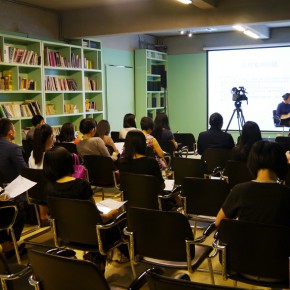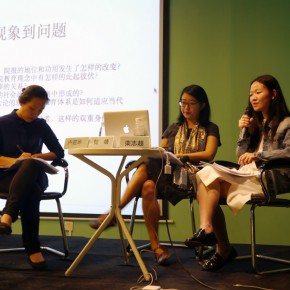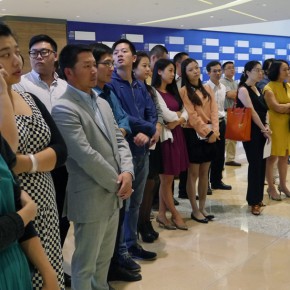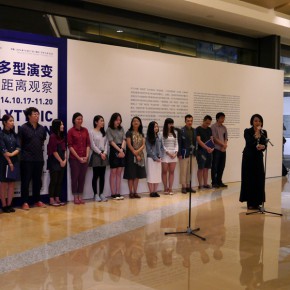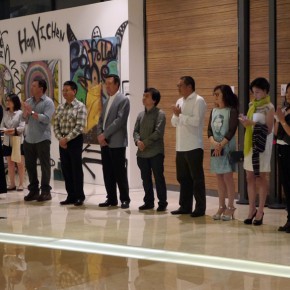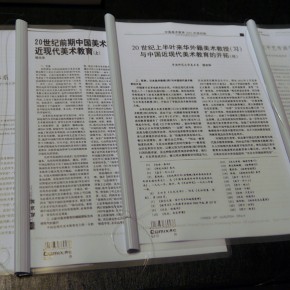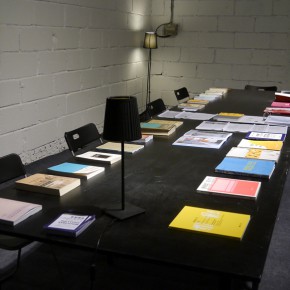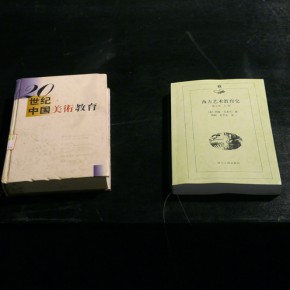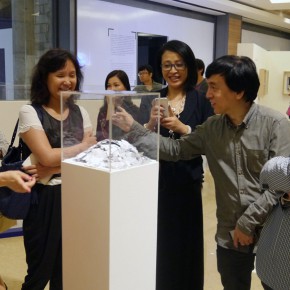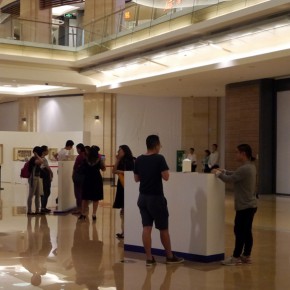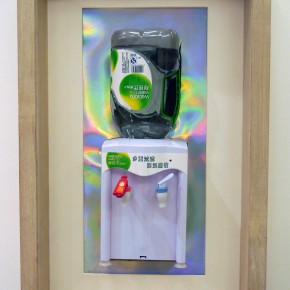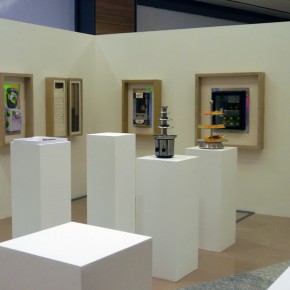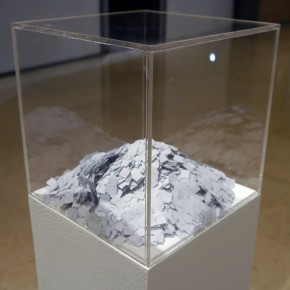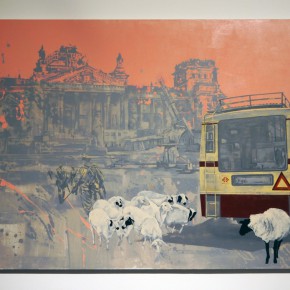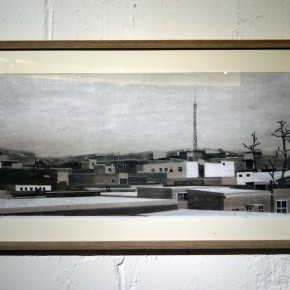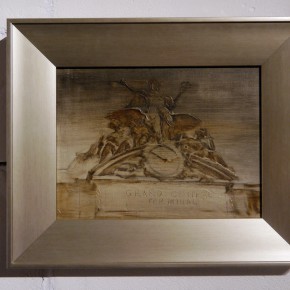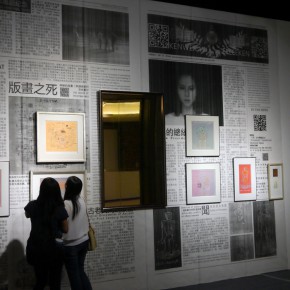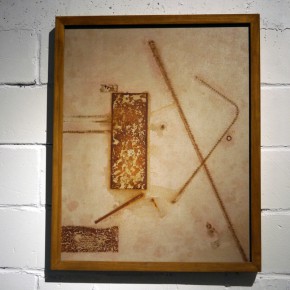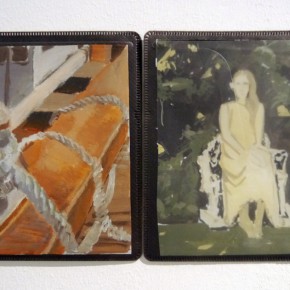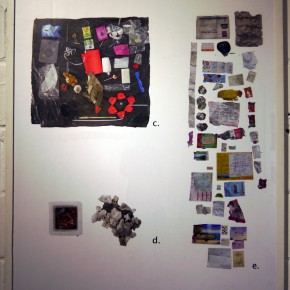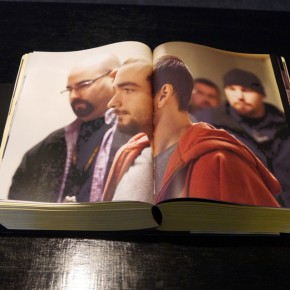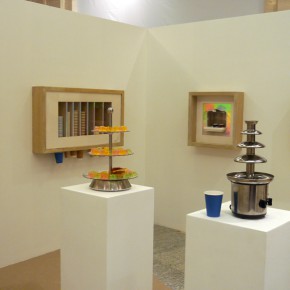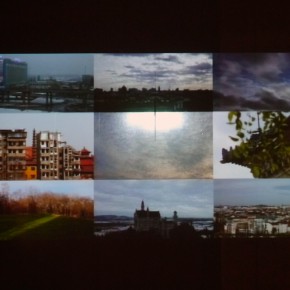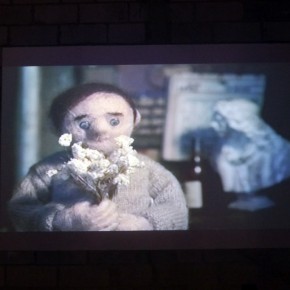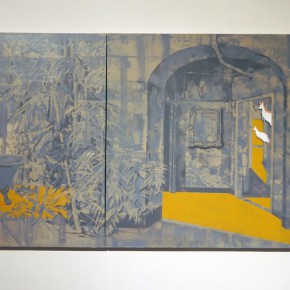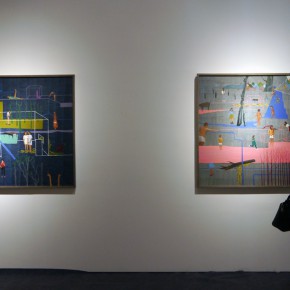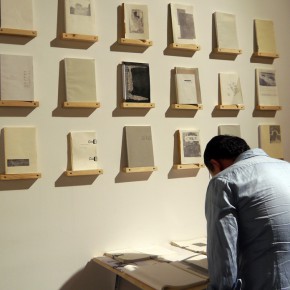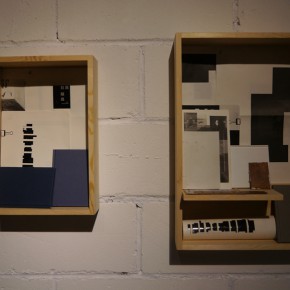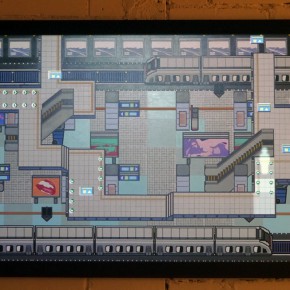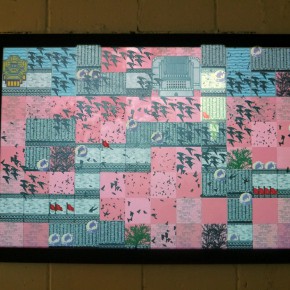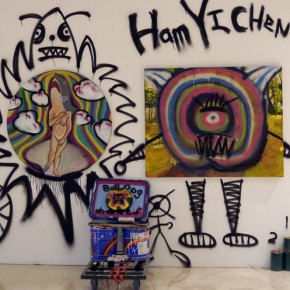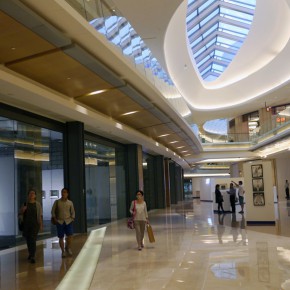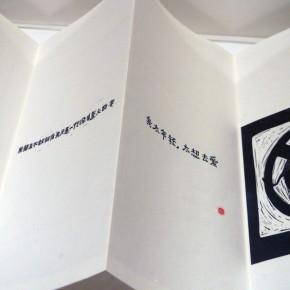
On the afternoon of October 17, 2014, hosted by OCAT Shenzhen, “Polytypic Evolution: A Close-up Observation” Fresh Vision 2014 opened at OCT Harbour. It is jointly curated by He Jing and Luan Zhichao. By observing the graduate thesis works from art academies across the country, it is possible to present them in an exhibition, publication and a series of lectures, in order to analyze the mechanism of art education behind the youth art creative ecology, thus “observation” and “reflection” becomes the key words of the Fresh Vision of the year.
At present, youth art is the focus of attention so a large number of exhibitions, awards, fairs and the annual graduate exhibitions emerge from art academies and create interesting topics. Found in 2004, “Fresh Vision” is an exhibition mechanism that annually presents the creative states of young graduates from the academies across the country each year, and it continues to focus on domestic academies for ten years. It is themed on “Polytypic Evolution: A Close-up Observation” of the year, and breaking through the traditional model of graduate exhibitions with its selection of works simply for being “outstanding”, instead it is based on the observation and presentation of graduate work, to present observations and thinking on the current state of Chinese art education. The Art Director of OCAT Shenzhen Carol Lu Yinghua introduced the exhibition and said that, it was impossible for our discovery and presentation of one or several works by the artist in our job to make us better understand the artists. What situation and context did the developing young artists who accept education from academies carry out during their creative practices? It is a very intelligent and necessary issue at present. And it is also the 2nd exhibition of “Fresh Vision” after it was taken over by OCAT Shenzhen instead of He Xiang Ning Art Museum.
For the preparation of the exhibition, the curatorial team visited the top ten Chinese art academies in Beijing, Guangzhou, Hangzhou, Chongqing and other cities, attending the graduate exhibitions, and they didn’t only observe plastic arts, they also extended to art design, new media, experimental video and other fields. Through the observation, the curatorial team finds some problems worthy of reflection in the current art education: Firstly, the traditional departmental divisions between “Chinese painting, oil painting, printmaking and sculpture” emphasizing the training of a certain professional skill but limiting the imagination of artistic ontology; Secondly, by arranging the assignment course first and then the creation course during the process of education is like having the cart before the horse; Thirdly, it’s lack of concept of “exhibition”, an exhibition doesn’t only refer to hanging the work on the wall, but also to building a kind of mechanism and context for watching, the current education is short of consciousness on “how my work should be seen”; Fourthly, it is short of professional training in the transition from “art students” to “professional artists”; Fifthly, the elimination rate of art is very high, but art academies only teach students skills, instead of telling students what kind of road they face in the future.
With such an observation, the exhibition also clearly shows its attitude and position for artists, rather than medium (Chinese painting, oil painting, printmaking and sculpture) it uses creation to define creation itself; with an independent thinking and creative ability, and to further improve the self subjectivity; considering every piece of work as a part of self creation, rather than merely a class assignment; so there is a strong sense of industry and reality; have a clear and definite cognition of exhibitions and displays. Under the existing educational system these artists have a strong self creative consciousness which offer many referent samples for the “evolving” method of the system that has been rooted in the “Soviet School” since the early days of the People’s Republic of China, which is also the meaning and significance of the theme of the exhibition “Polytypic Evolution”.
Although the exhibition is entitled “Observation”, thinking of the issues which run through the issues and historical narratives related to the Chinese art education, which is also the multiple meaning of “polytypic evolutions”. The exhibition showcases a large amount of literature, it not only presents the establishment of the education system and the consistent rectification process, it also reveals the issues we currently observe which doesn’t only appear at “present”, but also in the past and future. In order to deepen the observation and reflection of the exhibition, it also holds a series of lectures on “Getting Along With the Academy: Creation, System, Field of History”, inviting scholars to talk about the history of the forming of modern art education in China, observing the relationship between art education and the political and social movements, at the same time it also hopes to put forward some opinions and suggestions, so as to draw the outline of the specific form of this system and have a present, effective and constructive critical reflection.
The exhibition will continue to November 20.
About the exhibition
Curators: He Jing, Luan Zhichao
Participating Academies: China Central Academy of Fine Arts, Academy of Art and Design of Tsinghua University, China Academy of Art, Tianjin Academy of Fine Arts, Sichuan Fine Arts Institute, Hubei Institute of Fine Arts, Guangzhou Academy of Fine Arts
Participating Artists: (in alphabetic order by name)
Chen Yihan, Dai Mo, Jia Yunmeng, Li Menghua, LianPeiwei, Liu Ying, Lv Ye, Nie Huixiang, Qiao Qian, Sui Linghui, Wen Feifei, Wen Xiaotong, Wu Jiaru, Xiang Chen, Ye Wuji, You Huaming, Zhang Danyan, Zhang Wenchao, Zhang Xiaodi, Zhou Zijian, Zhuo Zhipeng
Text and photo by Zhang Wenzhi, translated by Chen Peihua and edited by Sue/CAFA ART INFO.


